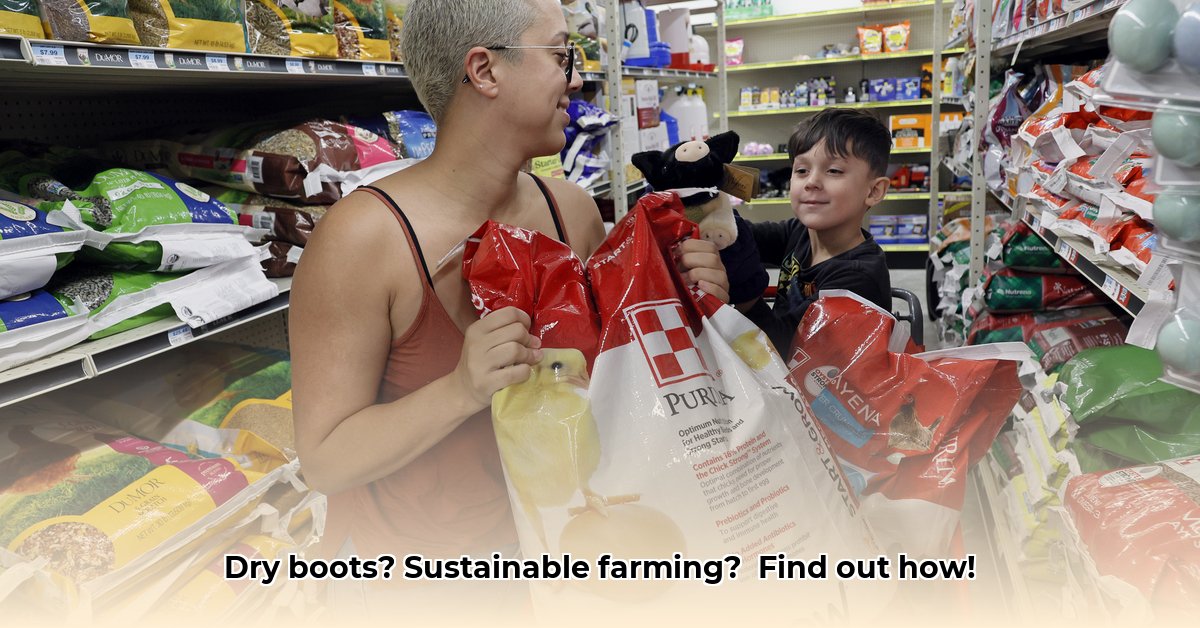
The Importance of Dry Boots in Sustainable Agriculture
Working on a farm demands long hours and exposure to challenging conditions. Muddy boots are inevitable, but consistently wet feet negatively impact both worker health and farm efficiency. A simple solution, like a boot dryer from Tractor Supply, offers significant advantages for sustainable agriculture practices. For added protection, consider women's rain boots. This article explores how maintaining dry boots contributes to improved worker well-being, extends the lifespan of essential equipment (boots), and enhances overall farm hygiene.
Worker Health and Safety: The Foundation of Sustainable Farming
Wet boots create an environment ripe for bacterial and fungal growth, leading to athlete's foot, blisters, and other foot problems. These conditions cause discomfort, reduce worker productivity, and potentially lead to lost workdays. A boot dryer from Tractor Supply helps mitigate these risks, creating a safer, healthier work environment. A healthier workforce is a more productive and sustainable workforce. Doesn't that make sense? Investing in worker well-being ultimately reduces healthcare costs and improves overall farm efficiency.
Extending Boot Lifespan: A Sustainable Choice
Frequent boot replacement contributes to a significant amount of waste. Wet boots degrade faster, cracking and deteriorating more quickly than dry ones. By using a boot dryer, farmers can extend the useful life of their work boots considerably. This reduces the need for frequent replacements, minimizing waste and lowering the environmental impact associated with manufacturing and disposing of boots. Did you know that extending the life of your work boots by just six months can decrease landfill waste by a significant amount? (The exact percentage dependent on individual boot usage). This small change makes a large contribution toward sustainable practices.
Enhanced Farm Hygiene and Biosecurity
Dry boots play a crucial role in maintaining a clean and healthy farm environment. Wet boots can track pathogens, mud, and other contaminants into barns, stables, and other areas, potentially spreading diseases among livestock or contaminating crops. Maintaining dry footwear directly contributes to improved biosecurity and a reduced risk of disease outbreaks. This preventative measure saves money on veterinary bills and reduces potential crop losses—essential elements of sustainable agriculture.
Choosing and Using Your Tractor Supply Boot Dryer
Tractor Supply offers a range of boot dryers to suit various needs. Consider these factors when making your selection:
Capacity: Choose a dryer that accommodates the number of boots you need to dry simultaneously.
Drying Speed: Opt for a dryer with a relatively short drying cycle to minimize downtime.
Temperature Control: Adjustable heat settings allow you to tailor the drying process to different boot materials and levels of wetness.
Durability: Select a robust and durable dryer capable of withstanding the rigors of daily farm use.
To maximize the effectiveness of your boot dryer, follow these simple steps:
Pre-Cleaning: Remove excess mud and debris from your boots before placing them in the dryer.
Proper Placement: Ensure proper boot positioning for optimal airflow. Refer to your dryer's instruction manual.
Drying Time: Adhere to the manufacturer's recommended drying times to avoid over-drying or under-drying.
The Bottom Line: Sustainable Farming Starts with Healthy Feet
Investing in a boot dryer is a small yet impactful step toward creating a more sustainable and efficient farm operation. It improves worker health and safety, extends the life of boots, enhances farm hygiene, and contributes to reduced environmental waste. It’s a smart financial decision that encompasses multiple positive factors. This seemingly small improvement provides significant long-term benefits. Consider it a crucial contribution to your farm's sustainability efforts.